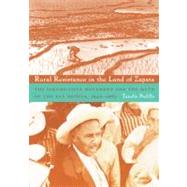
Padilla provides a detailed history of a mid-twentieth-century agrarian mobilization in the Mexican state of Morelos, the homeland of Emiliano Zapata. In so doing, she brings to the fore the continuities between the popular struggles surrounding the Mexican Revolution and contemporary rural uprisings such as the Zapatista rebellion. The peasants known in popular memory as Jaramillistas were led by Rubn Jaramillo (190062). An agrarian leader from Morelos who participated in the Mexican Revolution and fought under Zapata, Jaramillo later became an outspoken defender of the rural poor. The Jaramillistas were inspired by the legacy of the Zapatistas, the peasant army that fought for land and community autonomy with particular tenacity during the Revolution. Padilla examines the way that peasants used the legacy of Zapatismo but also transformed, expanded, and updated it in dialogue with other national and international currents of struggle. The Jaramillistas fought consistently through legal channels for access to land, the means to work it, and sustainable prices for their products, but the Mexican government increasingly closed its doors to rural reform. When the Jaramillistas persisted, the government responded with repression, pushing them into armed struggle, and transforming calls for local reform into broader critiques of capitalism. With Rural Resistance in the Land of Zapata, Padilla sheds new light on the decision toinitiate armed struggle, womens challenges to patriarchal norms, and th
|